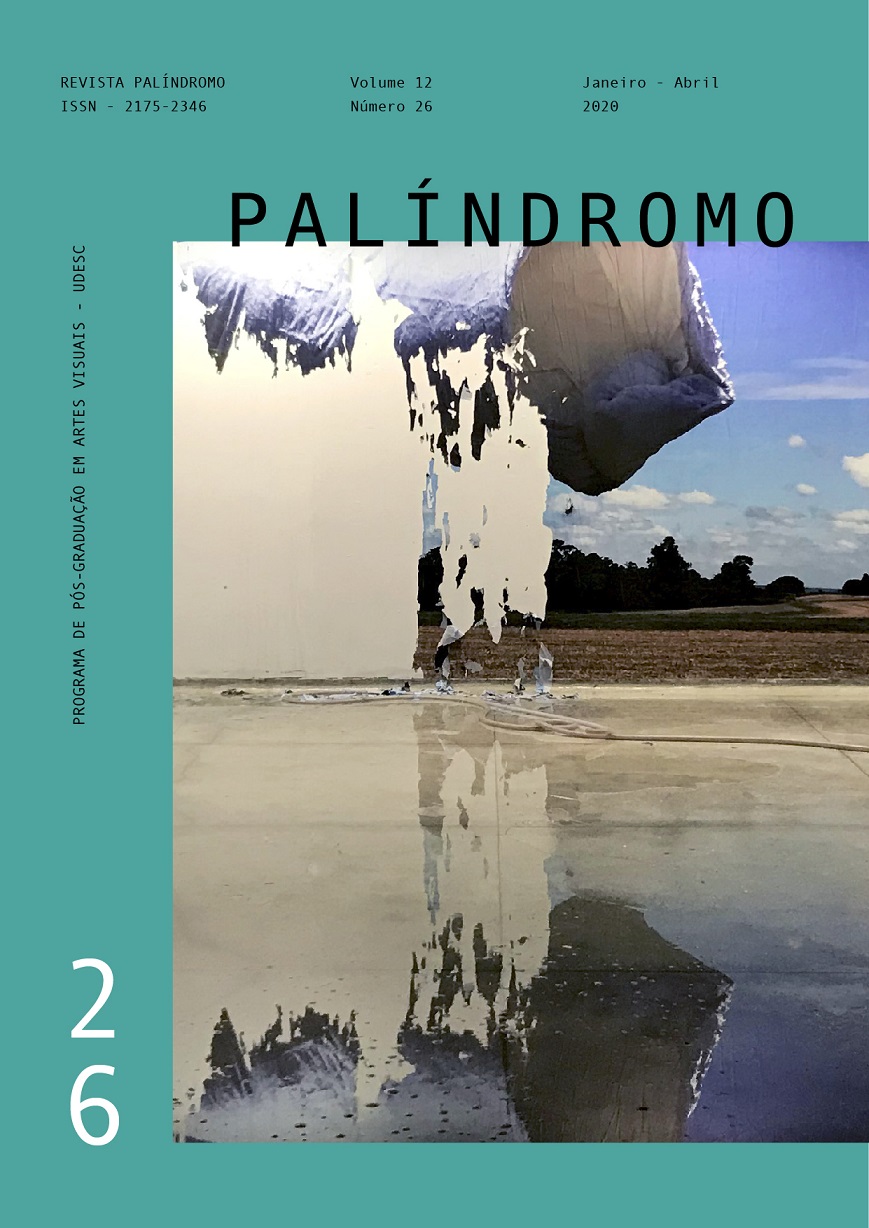Highest slope line: poetic-critical relations of walking
DOI:
https://doi.org/10.5965/2175234612262020013Keywords:
line, walking, city, poetic-critical actionAbstract
This article deals with walking / moving as a line and its power in activating the city context, both thought from the contemporary artistic phenomenon. Starting from a brief survey and historical outline of how the line has been discussed in art history until it comes to walking as a practical procedure and creative method, the article then discusses its object in the contextual relationship between art, individual and poetic-political presence in the city. To this end, the main artistic reference is the action “Se Hace Camino al Andar”, by the Spanish artist Esther Ferrer, in its performance near the Salvem El Cabanyal Platform, in the city of Valencia / Spain. To build its arguments, the article uses as theoretical contributions the writings of the movements of the 1960s / 70s, Situationism and Fluxus, as well as the studies on the city of Michel de Certeau and on Tim Ingold’s line and displacement.Downloads
References
AAUGÉ. Marc. Não Lugares: Introdução a uma antropologia da supermodernidade. SP: Papirus, 2012.
BECKER, Jéssica. Arte de Acción. Dissertação. Espanha: Universidad Politécnica de Valencia, 2010.
______________. Cotidiano Experimentado: o processo criativo na prática de ações. Dissertação. Porto Alegre: PPGAV-IA/UFRGS, 2011.
______________. O Eu e o Outro: Alteridade e Identidade na Construção do Proces-so Criativo. Tese. Porto Alegre: PPGAV-IA/UFRGS, 2017.
CERTEAU, Michel. A invenção do cotidiano: 1. Artes do Fazer (1990). RJ: Editora Vo-zes, 11ª Edição, 2005.
DEBORD, Guy. Introdução a uma crítica da geografia urbana. IN: JACQUES, Paola Berenstein. Apologia da Deriva: Escritos Situacionistas sobre a cidade. RJ: Casa da Palavra, 2003. P.39-41.
DERDIK, Edith. Disegno. Desenho. Desígnio. SP: Senac, 2007.
Festival of Fantastic - Fluxus. 1985. Arquivo on line. Dinamarca: Museum of Contem-porary Art, 2019. Disponível em: http://www.festivaloffantastics.com/. Acesso em: 28/06/2019.
FILLIOU, Robert. Teaching and Learning as Performing Arts. Nova Iorque: Kasper Kö-nig, 1970.
_____________. El Arte es lo que hace la vida más interesante que el arte. Canadá: Inter Editeur, 2003.
FLOREZ, Fernando Castro. Robert Smithson. El dibujo en el campo expandido. In: MOLINA, Juan José Gómez. Estrategias del dibujo en el arte contemporânea. Madri: Cátedra, 1999.
HENDRICKS, Jon. O que é Fluxus? O que não é! O por quê. Brasília: Centro cultural Banco do Brasil, 2002.
INGOLD, Tim. Líneas: uma breve história. Barcelona: Editorial Gedisa, 2015. E-book (não paginado). Disponível em: www.livrariacultura.com.br. Acessado em: desde abril de 2019.
JACQUES, Paola Berenstein. Apologia da Deriva: Escritos Situacionistas sobre a cida-de. RJ: Casa da Palavra, 2003.KANDINSKY, Wassily. Ponto e Linha sobre Plano (1926). São Paulo: Martins Fontes, 2005.
KLEE, Paul. Diários (1961). São Paulo: Martins Fontes, 1990.
KRAUSS, Rosalind. La Originalidad de la Vanguardia y Otros Mitos. Madri: Alianza Edi-torial, 2006.
LONG, Richard. Walking the Line. Londres: Thames & Hudson, 2005.
MICHELI, Mário de. As Vanguardas Artísticas. SP: Martins Fontes, 2004.
MOLINA, Juan José Gómez. Estrategias del dibujo en el arte contemporaneo. Madri: Cátedra, 1999.
Downloads
Published
How to Cite
Issue
Section
License
Copyright (c) 2020 Jéssica Becker

This work is licensed under a Creative Commons Attribution 4.0 International License.
COPYRIGHT STATEMENT
The articles published by the magazine are free to use, intended for academic and non-commercial applications. Copyright is all assigned to the magazine. The articles whose authors are identified represent the expression from the point of view of their authors and not the official position of Palíndromo Magazine. The author (s) commits to whenever they publish material referring to the article published in Palíndromo mention this publication as follows:
This article was originally published by Palíndromo magazine in its volume (place the volume), number (place the number) in the year of (place the year) and can be accessed at: http://www.revistas.udesc.br/index.php/palindromo


